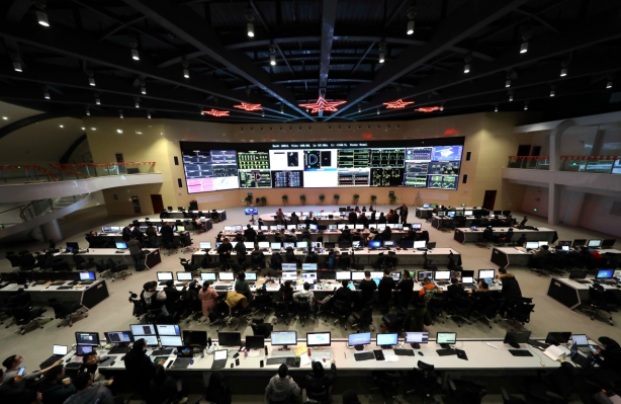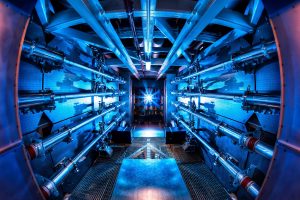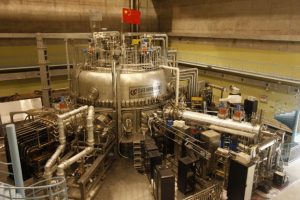The hottest thing in the solar system is the Sun.
But for nearly two minutes in 2021, that heavyweight title was taken over by an experimental fusion reactor in Hefei, China.
On 30 December, the artificial sun reactor went a step further and achieved a continuous high-temperature plasma operation for close to 1,056 seconds, or close to half-an-hour, the longest duration of its kind ever.
To say the implications for global politics and security are monumental, would be an understatement, Defense One reported.
Also on AF: Coal to Remain the Heart of China’s Energy Strategy
What is the aim of the Tokamak Fusion Reactor?
The goal is apparent and noble — to unlock the secret to clean and limitless energy on earth, with minimal waste products.
But while China and other nations around the world, pour billions of dollars into developing the technology, most researchers believe we are still decades away from a working reactor emerging from its experimental stages.
Nevertheless, Chinese scientists and engineers — all 300 of them who operate the 6 billion yuan Experimental Advanced Superconducting Tokamak (EAST) project — are setting astonishing records.
Located at the Institute of Plasma Physics of the Chinese Academy of Sciences (ASIPP) in Hefei, the Tokamak reactor utilised fusion technology to set a record in May last year after it ran at 216 million degrees Fahrenheit (120 million degrees Celsius) — more than six times hotter than the Sun — for 101 seconds, according to The Sun media group.
For another 20 seconds, the “artificial sun” also achieved a peak temperature of 288 million degrees Fahrenheit (160 million degrees Celsius), at least ten times hotter than the sun.
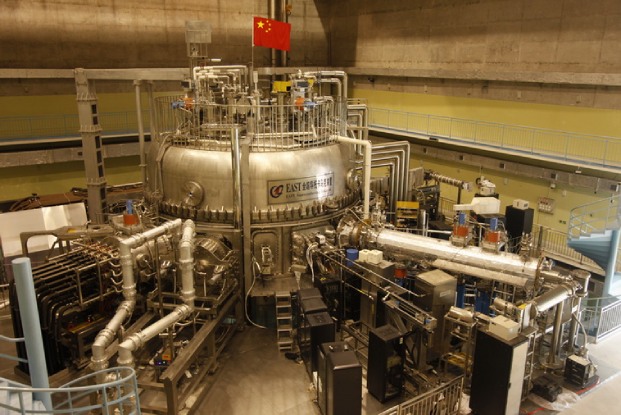
“The breakthrough is significant progress, and the ultimate goal should be keeping the temperature at a stable level for a long time,” Li Miao, the director of physics at the Southern University of Science and Technology in Shenzhen, told the Global Times.
In the past 15 years since it began operations, EAST has achieved three targets separately – 1-million-ampere current, 1,000-second duration and 100-million-degree-Celsius temperature. The final mission for the tokamak is to achieve all targets in one go.
Apart from the EAST, China currently operates the HL-2A reactor in Chengdu as well as the J-TEXT in Wuhan.
The Sun in a Box
Described as “the Sun in a box,” for nuclear fusion to occur on earth, tremendous heat and pressure are applied on hydrogen atoms so that they fuse together. The nuclei of deuterium and tritium — both found in hydrogen — are made to fuse together to create a helium nucleus, a neutron along with a whole lot of energy, The Indian Express reported.
With the help of a strong magnetic field, the hot “plasma soup” is kept away from the walls of the reactor to ensure it does not cool down and lose its potential to generate energy.
Research programs at the Princeton Plasma Physics Laboratory (PPPL) and Joint European Torus (JET) in England follow similar approaches.
If eventually adopted, deuterium-tritium-based fusion would be the only source of electrical power that does not exploit a naturally occurring fuel or convert a natural energy supply such as solar radiation, wind, falling water or geothermal.
But while the new world record is promising, EAST still doesn’t produce usable power.
According to ExtremeTech.com, Tokamak-style reactors have been around for years, but they all consume far more power than they produce.
It takes a huge amount of energy to heat hydrogen until it becomes a 100 million-degree plasma cloud, and then you need even more power to run the super-powerful magnets that keep it contained in the toroidal reactor chamber.
Giant Leap for Green Energy?
So is it a giant leap forward in green energy, or is the China fusion project just a white elephant? Or is it a case of when, and not if, as some speculate.
Song Yuntao, deputy director of the Institute of Plasma Physics at the Hefei Institute of Physical Science, remains confident they can generate power by 2040. If so, it could put China ahead of the pack.
“Five years from now, we will start to build our fusion reactor, which will need another 10 years of construction,” he said. “After that is built we will construct the power generator and start generating power by around 2040.”
But China is not the only country that has achieved high plasma temperatures. In 2020, South Korea’s KSTAR fusion reactor set a new record by maintaining a plasma temperature of over 100 million degrees Celsius for 20 seconds.
A pioneering reactor in Britain is also gearing up to start pivotal tests of a fuel mix that will eventually power the International Thermonuclear Experimental Reactor (ITER) — the world’s biggest nuclear-fusion experiment.
JET researchers at the Culham Centre for Fusion Energy (CCFE) near Oxford, have started conducting deuterium-tritium fusion experiments. The facility is a one-tenth-volume mock-up of the US$22-billion ITER project and has the same doughnut-shaped Tokamak.
“It’s very exciting now to, at last, get to the point where we can put into practice what we’ve been preparing all these years,” says Joelle Mailloux, who co-leads the scientific program at JET. “We’re ready for it.”
Once fully operational, the ITER team believes the enormous device could be ten times more efficient than existing systems.
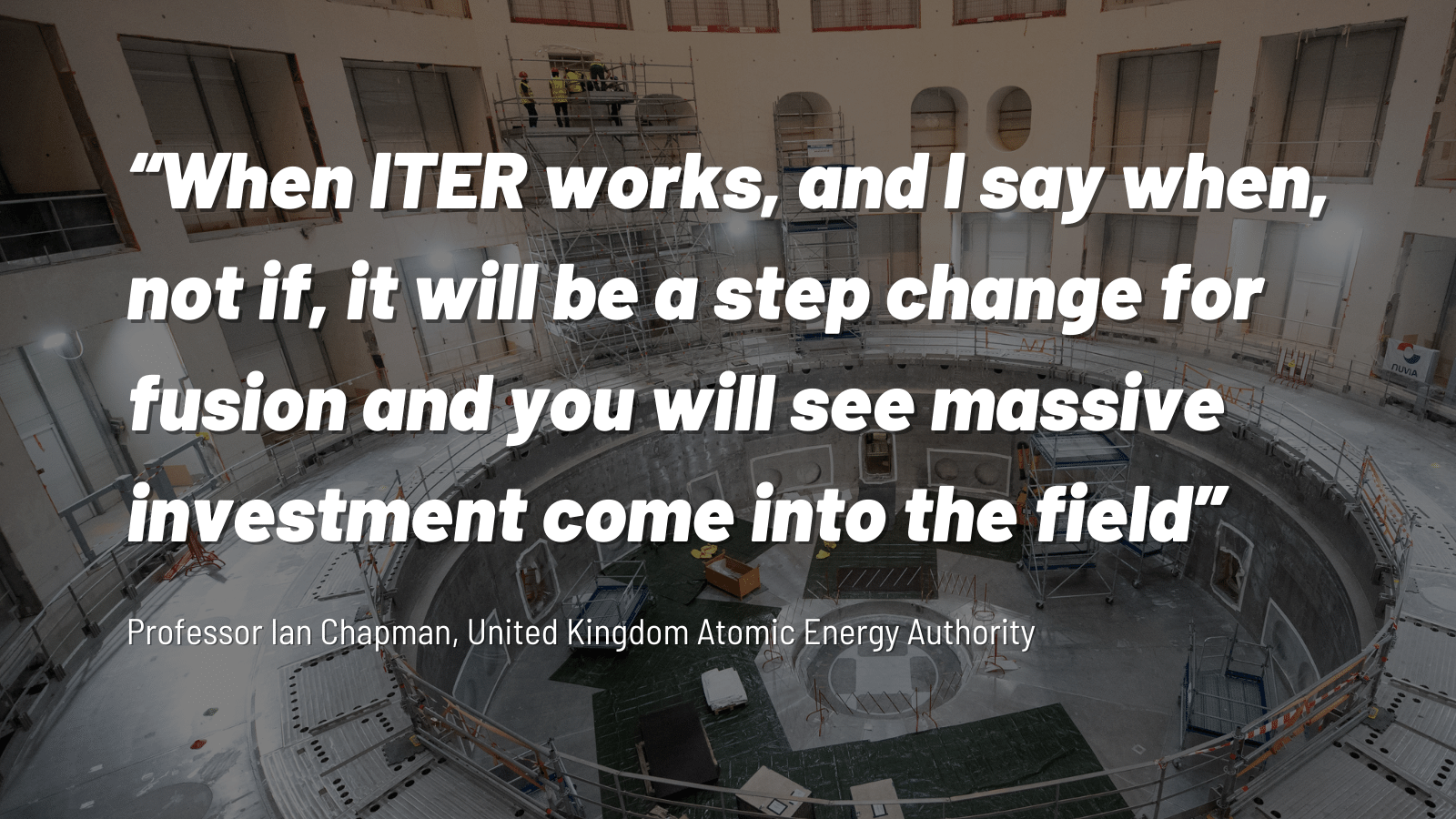
Cost Overruns, Pandemic Are Key Tokamak Reactor Hurdles
Currently under construction in Cadarache, southern France, ITER has been hit with cost overruns and disruptions caused by the Covid-19 pandemic, officials told Euractiv.com.
“One of the reasons that ITER is late is that it is really, really hard,” said Prof Ian Chapman, chief executive of the UK Atomic Energy Authority.
“What we are doing is fundamentally pushing the barriers of what’s known in the technology world. And, of course, you reach hurdles and you have to overcome them, which we do all the time and ITER will happen, I am completely convinced of it.”
The schedule was to have the first plasma by the end of 2025 and full nuclear fusion by 2035, said Bernard Bigot, the director general of ITER.
“We were on track until the end of 2019 but unfortunately, as you know, the world has been impacted by Covid-19,” Bigot said. “So, clearly, first plasma in 2025 is no longer technically achievable.”
ITER is an international project funded by 35 partner countries, including the European Union, the UK, Switzerland, China, India, Japan, Korea, Russia and the US.
Artificial Sun Reactors: A Matter of Scale
Most experts are confident the idea will work, but many believe that it is a matter of scale. To make it work, you have to go large, the BBC reported.
“I think fusion needs resources to really make it work,” said Prof. Ian Chapman from the United Kingdom Atomic Energy Authority (UKAEA). “You could do that within a company or a country but you really need to have the requisite scale and resources.
“When ITER works, and I say when, not if, it will be a step change for fusion and you will see massive investment come into the field.”
Meanwhile, scientists at the US Department of Energy’s flagship laser facility shattered their own record by generating more than 10 quadrillion watts of fusion power for a fraction of a second — roughly 700 times the generating capacity of the entire US electrical grid, Nature.com reported.
Housed at Lawrence Livermore National Laboratory in California, the US$3.5-billion facility wasn’t designed to serve as a power-plant prototype, however, but rather to probe fusion reactions at the heart of thermonuclear weapons.
Researchers at the PPPL also recently announced they have developed an effective computational method to simulate the crazy-quilt movement of free electrons during experimental efforts to harness fusion power.
The method cracks a complex equation that can enable improved control of the random and fast-moving moving electrons in the fuel for fusion energy.
The European Investment Bank is also pumping hundreds of millions of euros into the Divertor Tokamak Test facility (DTT), an Italian program to produce fusion energy by 2050.
Meanwhile, only time will tell by when all these efforts and investments will start delivering results on Earth.
- Dave Makichuk
ALSO READ:




